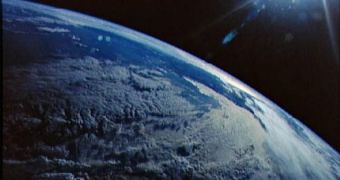It may look like the stars live for ever and never change position in the sky or even that planets have extremely precise orbits, but the truth is anything but that. That's the reason why a team of astronomers from the St Mary University in Canada are proposing a redefinition of the astronomical unit. The scientific community defines the astronomical unit as the rough distance between the Sun and the Earth.
To be more precisely, the definition of the astronomical unit of the International Astronomical Union goes like this: an astronomical unit represents the radius of an unperturbed circular orbit that a massless body would revolve about the Sun in 2π/k days, where k is a constant derived from a fixed estimation of the Sun's mass. Meaning the rough distance between the Sun and the Earth is about 149,597,870.691 kilometers.
However, there is a problem. The Sun's mass is not constant. In fact, it is loosing more than 6 billion kilograms of material every second through mass ejection, radiation and light. This has been proven nearly a century ago when Albert Einstein formulated its famous equation E=mc2, meaning that matter and energy are two different forms of existence of a single entity.
The loss in mass ultimately affects the planet's orbits, which over time would get wider and wider. Mercury's orbit for example gains about 1.4 kilometers in radius in one century, and 5.5 kilometers over two centuries. Although it may not seem like much, meaning that orbits of current spacecrafts are not affected, such a loss in mass could lead to scientific discoveries or revealing mysteries behind some strange anomalies.
One of these anomalies is the Pioneer incident, when two of NASA's Pioneer probes altered their trajectories far from the predicted ones.
James Williams from NASA's Jet Propulsion Laboratory, agrees that the definition of the astronomical unit has been relatively accurate in the past, but measurement accuracy is now reaching the predicted variations, thus the definition must be changed. However, such processes may take a while according to Jan Vondrak president of IAU's division on fundamental astronomy, since these procedures usually require the establishment of all arguments to find a wide consensus, and only after that the IAU can propose a resolution for approval, process which may take years.

 14 DAY TRIAL //
14 DAY TRIAL //